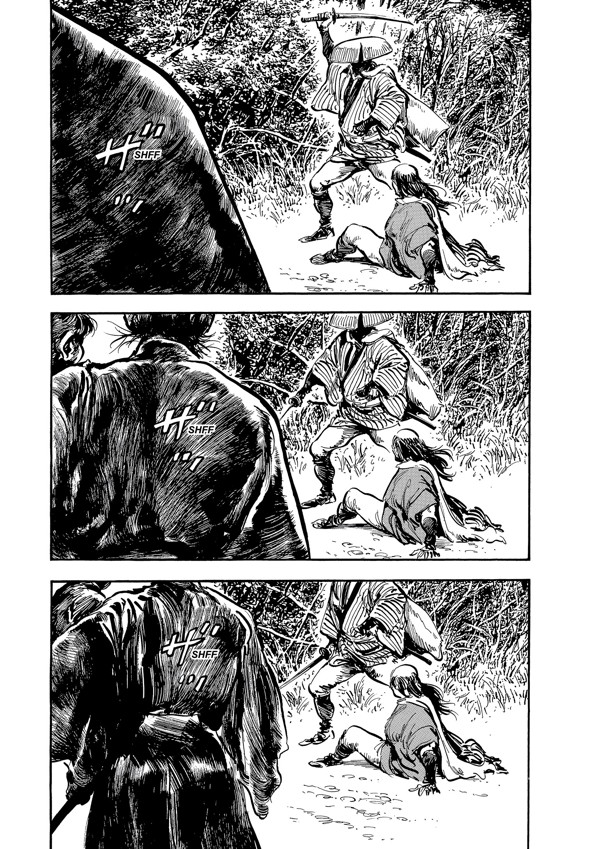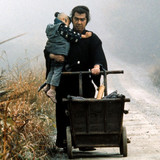

American comic book creator Frank Miller was also impressed by the series, providing covers and introductions for the first dozen issues of the 1980s US reprint before casting similar samurai and ninja characters, fond of dismemberment and decapitation, in his series Ronin and Sin City.

It is interesting to see how adaptations of comics in Western cinema are now approaching the level of violence depicted in their Japanese counterparts 30 years ago. The American remix of the first two films - Shogun Assassin - was withdrawn from distribution in the UK for 15 years following the backlash against ‘video nasties’ in the early 1980s. The violence alone was parodied in a memorable scene in The Addams Family (1991) where Wednesday and Pugsley hack each others’ limbs off in a school play, spraying the audience with blood. The legacy of the Lone Wolf series has influenced work in various media in a number of ways. However, the films do increase in violence as they go along, with the final film White Heaven in Hell ( Jigoku e ikuzo! Daigorō) depicting a battle between Ogami Ittō and 150 assailants, the largest body count caused by a single individual committed to screen in one scene (although the Rambo franchise boasts more over its entire length). Unlike the manga, the films don’t have a definitive conclusion as the comic was still being serialised while the films were produced, with the final episode printed in Weekly Manga Action in April 1976. The rest of the first film and subsequent episodes have Ogami and ocassionally Daigorō dispatch various members of the Yagyū clan and perform work for hire from town to town.
#Lone wolf and cub install#
The first instalment, Sword of Vengeance ( Kowokashi udekashi tsukamatsuru), tells the tale of how Ittō goes on the run when members of a splinter faction of the clan murder his wife and household and frame him for treason in order to install one of their own as the Shogun’s executioner, a revered position in the social hierarchy. The six instalments follow the travels of disgraced samurai Ogami Ittō and his three-year-old son Daigorō, who he pushes around 17th-century Japan in a cart, looking for work as a killer for hire while battling members of the Yagyū clan. The overall story is quite simple, although individual episodes may leave the casual viewer wondering about characters’ motives and allegiances. While it is one of the most violent examples of the genre, the staccato brutality suits the plot and is juxtaposed with elegiac scenes of travel through desolate landscapes. The 70s Japanese series Lone Wolf and Cub, based on a popular comic by Kazuo Koike and artist Goseki Kojima, builds on the tradition of 20 years of samurai films. Writers: Kazuo Koike, Tsutomu Nakamura, Robert Houston, David Weismanīased on the manga by: Kazuo Koike and Goseki KojimaĬast: Tomisaburo Wakayama, Akihiro Tomikawa, Fumio Watanabe, Shigeru Tsuyuguchi Includes: Sword of Vengeance, Baby Cart at the River Styx, Baby Cart to Hades, Baby Cart in Peril, Baby Cart in the Land of Demons, White Heaven in Hell, Shogun Assassinĭirectors: Kenji Misumi, Buichi Saito, Yoshiyuki Kuroda, Robert Houston Format: Special Edition Blu-ray Collector’s Set


 0 kommentar(er)
0 kommentar(er)
